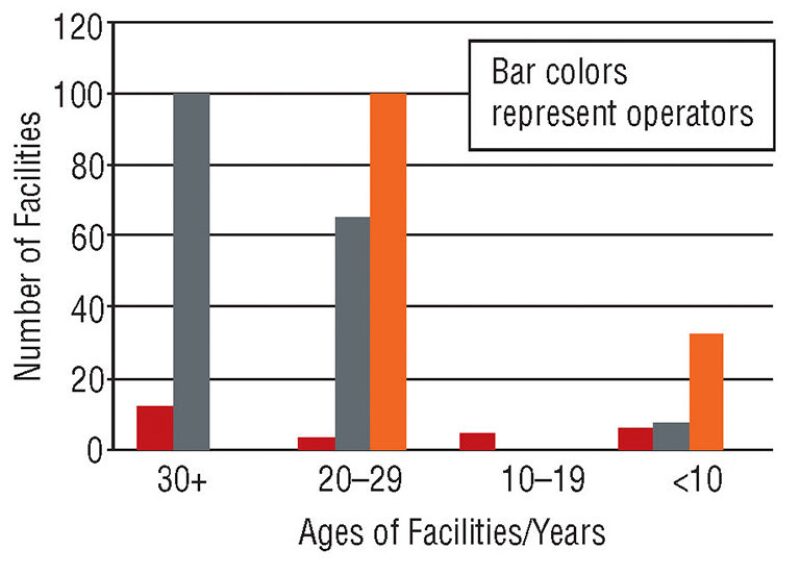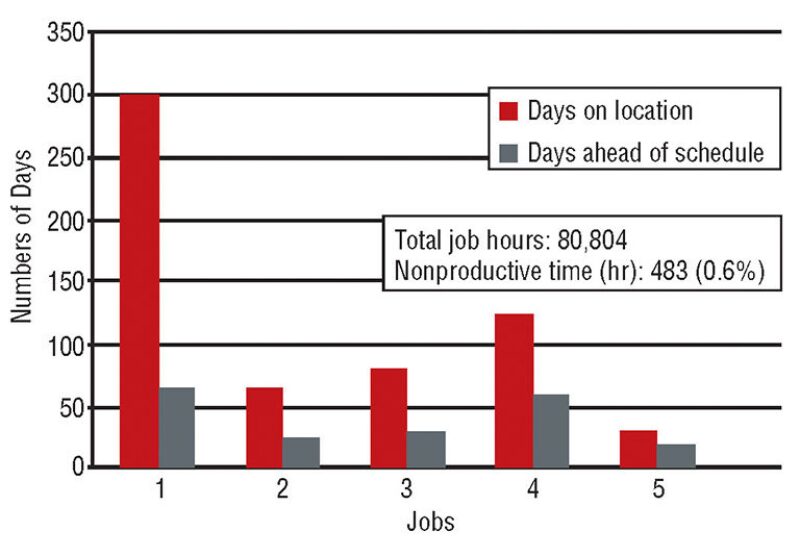Once an oil or gas well has reached its economic limit, at which its most efficient production rate is insufficient to cover operating expenses, the well’s operator is typically tasked with safely and efficiently abandoning the well. While well abandonment has traditionally been viewed as a “necessary evil”—a nonrevenue operation to be done quickly and with minimal expense—changes in technology and the regulatory climate have caused operators to make some significant shifts in their attitude concerning these operations.
A recent market study was commissioned by Weatherford and facilitated by Decision Strategies through focus groups in Aberdeen and Singapore and individual client discussions with operators in the Gulf of Mexico (GOM), North America, Asia Pacific, and North Sea regions. They shared opinions on their current and future needs in decommissioning and abandonment.
Technology Needs
Because well abandonment operations do not contribute to an operator’s profit margin, the general industry consensus is to abandon a well with minimal expense, while paying close attention to safety and efficiency. In addition, operators want to avoid the technically challenging and costly task of re-entering an abandoned well to plug a leak.
Increasingly, operators view well abandonment with a higher sense of urgency and a commitment to doing it correctly the first time. This is partly because of the growing number of aging assets in regions such as the North Sea and Asia Pacific (Fig. 1). Increasingly, operators of these assets have few choices but to consider newer, more efficient methods to safely decommission these wells.

However, many participants in the market study expressed unfamiliarity with new technologies to improve abandonment efficiency. Many operators believed that to truly improve efficiency, new technologies must be specifically designed for well abandonment, rather than retrofitting existing technologies that were designed for another application. In addition, many operators saw a need for more subsea intervention technologies, a technology class that is currently severely limited in options.
Service providers are developing technologies to answer these needs. For example, in the area of subsea drillstring section milling, Weatherford has transitioned from using existing underreaming and cutting technologies, which may require 6 to 10 separate runs to underream casing strings ahead of setting a cement barrier, to developing drillstring section technologies that can cut and recover multiple casing strings in a single trip. Not only do these tools save on rig time and minimize damage to seal surfaces, they also allow the wellhead to be recycled.
Rigless abandonment is receiving a great deal of development investment, and is driven by an industry preference for an alternative to drilling rigs for abandonment operations. Not only are drilling rigs prohibitively expensive, but operators prefer to deploy rigs on revenue-generating jobs such as drilling new wells.
Rigless technologies include new hydraulic pulling and jacking units that possess a smaller footprint and modular design compared with mobile drilling and snubbing units. These units are ideally suited for use on platforms with downgraded derricks and structural limits. In addition to plug-and-abandonment (P&A) operations, the units can be deployed for other intervention and abandonment tasks, including slot recovery, tubing change-out, coiled tubing operational support, and internal casing running and tubing patches.
Rigless abandonment services have demonstrated sizable benefits in terms of safety and cost efficiency. In a well abandonment operation in the GOM, a rigless pulling and jacking unit was deployed for 450 days on location, with no recordable incidents reported during that time. And over the course of several abandonment jobs in the field, the unit put the operator ahead of schedule from 19 to 66 days (Fig. 2).

Environmental Issues
Perhaps not surprisingly, the growing interest in safe and efficient well abandonment is partially being driven by increased environmental regulations as a result of the 2010 Macondo oil spill in the GOM. Many operators in the focus group viewed the regulatory environment in the North Sea as being more mature and well established than in other parts of the world, but regulations on abandonment and decommissioning are still in a state of flux. The Asia Pacific is considered farther behind in the decommissioning discussion, with many operators saying that the regional focus is still on increased oil and gas production.
Operators also see regulations as a moving target in many regions, with widely varied differences from country to country, and an uncertainty on how new regulations will be enforced. However, many of these same operators realize the importance of avoiding the need to return to an improperly abandoned well to repair a leak, an exercise that may cost upward of 10 to 30 times more than the expense of the initial P&A exercise.
Ensuring environmental compliance should begin by planning for well abandonment during the design phase of a project, with well service providers being linked closely with the well drilling, engineering, and asset teams. This level of early involvement will help service providers more thoroughly understand the operator’s drivers and process needs, and develop abandonment services that closely align with them.
These services include more robust data management at all stages of the asset life cycle, including reservoir production, integrity tracking of downhole equipment, and pressure test records. And this data must be updated and shared with all relevant parties, such that the decommissioning process can proceed as efficiently and safely as possible.
The Power of People
Many operators agreed the lack of industry professionals who are experienced in well abandonment makes decisions on optimal abandonment strategies challenging. The traditional thinking was that the engineers charged with planning the development of a well were also best suited to handle well abandonment. This mind-set is changing, as operators are now beginning to form specialist well abandonment groups that have the expertise and experience to abandon a well safely and efficiently, with minimal negative effects on the environment. Service providers are following suit, by moving away from the multiskilled engineer approach to building expertise in core areas such as well abandonment.
By developing the abandonment specialist, one who can execute all functions from start to finish, a service company also provides the operator with additional assurances on safety. In a series of abandonment jobs in the GOM, well abandonment specialists helped minimize worker injuries and total recordable incidents (Table 1).

As operators continue shifting their mind-set on well abandonment operations around the world, the trend toward more collaboration with the service provider on technical, environmental, and personnel fronts will only increase. The service provider who shows a commitment on these fronts will help shape the future of well abandonment and decommissioning activities.

Ian Smith is the global business unit manager of well abandonment and rigless intervention systems at Weatherford. He is a steering committee member in the European Chapter of the Intervention and Coiled Tubing Association and of the SPE Aberdeen Section’s 4th European Well Abandonment Seminar in April

Dominique Shu, principal of marketing intelligence at Decision Strategies, has more than 20 years of experience in market research and strategy development for companies across the upstream energy sector. She has developed programs for strategic analysis and execution and training programs to help others gather market insights.

